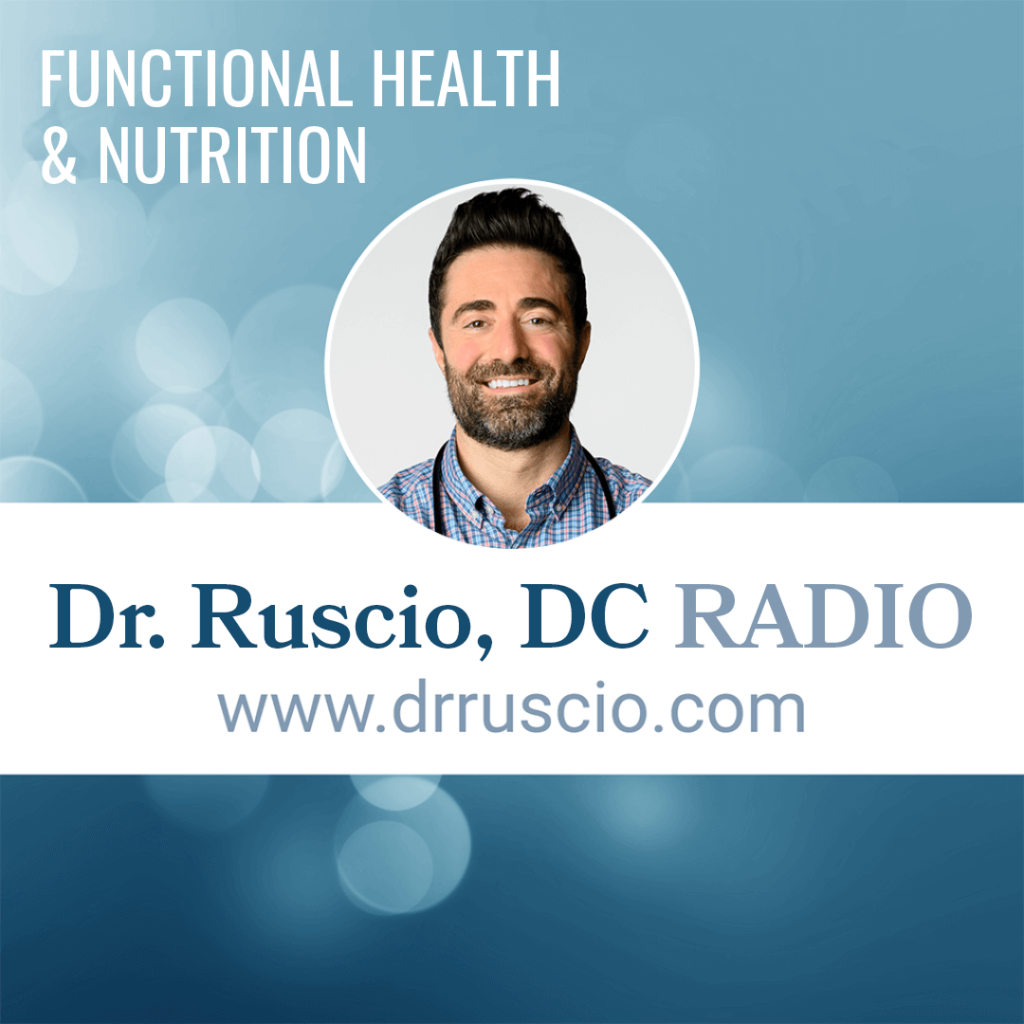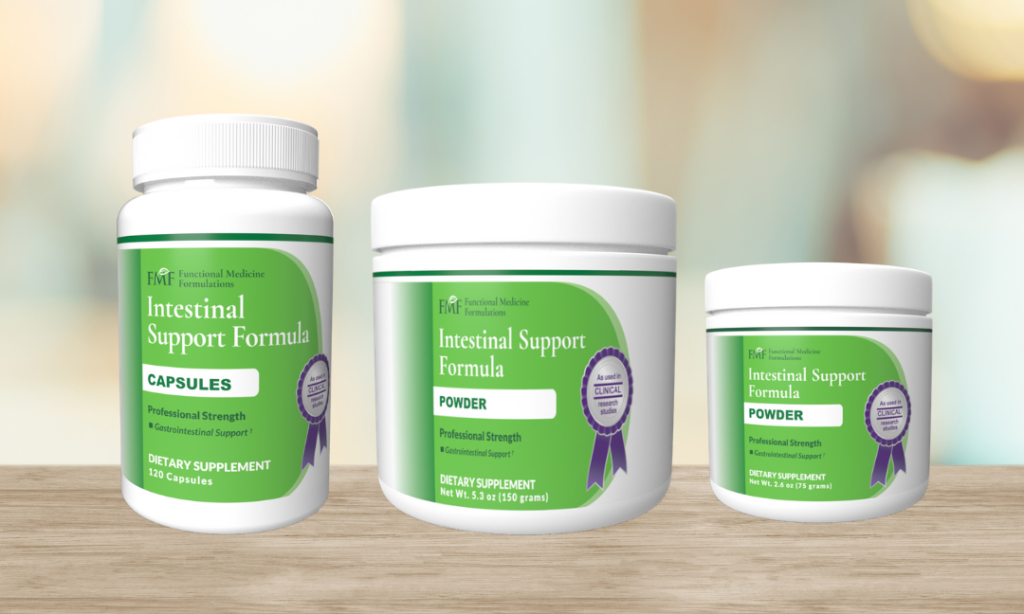The Gold Standard for Identifying Food Allergies
Reduce inflammation, identify food triggers, and improve your digestive and non-digestion symptoms with an elimination diet
It can be challenging to navigate food intolerances, allergies, or sensitivities. But the process can be made easier by skipping the food allergy test kits and following an elimination diet. An elimination diet allows you to know if a food is truly harmful or if it can be reintroduced later when inflammation has calmed down. Listen in to learn how temporarily removing the most common inflammatory foods from your diet can help you identify food triggers and know what you can safely eat.

Download this Episode (right click link and ‘Save As’)
Sponsored Resources
Erin here with the Ruscio team, answering an audience question. I’ve been thinking about trying your intestinal support formula or ISF. I’m going through Dr. Ruscio’s, DC protocol and I’m wondering where it makes the most sense. So immunoglobulin supplementation can be a great addition to your gut protocol, as long as you’ve addressed diet, tried probiotics, and treated gut imbalances. You can use the intestinal support formula during probiotic phase, which is step two, or after antimicrobials, step three.

Take the recommended dosing until you reach peak improvement, usually around six weeks to nine weeks. After that, you can start decreasing the dose until you’re off completely or until you found the minimal effective dose. The good news is most patients tolerate ISF very well, and it has a high rate of success. Learn more about intestinal support formula in our shop at drruscio.com. If you decide you wanna try ISF, use code ISFPodcast at checkout for 15% off. That’s ISFPodcast.
Dr. Michael Ruscio is a DC, natural health provider, researcher, and clinician. He serves as an Adjunct Professor at the University of Bridgeport and has published numerous papers in scientific journals as well as the book Healthy Gut, Healthy You. He also founded the Ruscio Institute of Functional Health, where he helps patients with a wide range of GI conditions and serves as the Head of Research.➕ Dr. Ruscio’s, DC Notes
Distinguishing the Differences Between Food Allergies, Sensitivities, and Intolerances
- A food allergy is a sudden, and sometimes life-threatening allergic reaction (anaphylaxis) to specific foods.
- Food sensitivities are an immune reaction. However, symptoms may be delayed.
- Food intolerances means your body doesn’t have the ability to break down parts of the food.
- Examples of a food intolerance:
- Lactose intolerance
- FODMAP intolerance
- Histamine intolerance
- Sulfur intolerance
- Examples of a food intolerance:
Food Allergy Symptoms
- Hives
- Itchy eyes, nose, throat, or ears
- Swollen tongue, difficulty breathing, or death (in severe cases)
Food Sensitivity Symptoms
- Bloating
- Abdominal pain
- Diarrhea
- Constipation
- Fatigue
- Joint or muscle pain
- Brain fog
- Headaches
Food Intolerance Symptoms
- Gas
- Bloating
- Diarrhea
- Constipation
- Rashes
- Headaches
- Joint pain
- Brain fog
Types of Food Allergy Test Kits
- IgG food sensitivity tests: These tests usually use a blood sample to check for IgG antibodies to broad panels of common food allergens.
- Mediator release tests: These tests expose a blood sample to allergens and check for a non-specific cellular immune response in the blood sample.
- Hair analysis tests: These tests use a hair sample and a “bio-resonance” machine to evaluate food sensitivities.
- Stool tests: At-home stool tests include markers for food reactivity to gluten, dairy, or other foods.
- Skin prick tests: These tests entail being pricked with small needles that have allergens on them, such as pollen, shellfish, or pet dander. If your skin has a reaction, you are considered allergic to that item.
The Best Way To Test Food Allergies? An Elimination Diet
- Elimination diet defined: An elimination diet removes the most common inflammatory foods that frequently cause food symptoms.
- Elimination diet benefits:
- It can quickly calm down inflammation.
- It can help you identify food triggers.
- It can improve digestive and non-digestive symptoms.
How To Do An Elimination Diet
- Elimination diets are not intended for long-term use. Follow these three phases over a course of 3-4 weeks.
- First phase: Elimination
- Remove foods that commonly contribute to food allergies, sensitivities, and intolerances. The most frequent culprits are gluten, dairy, soy, eggs, sugar, and processed foods.
- Second phase: Reintroduction
- Begin this phase after you reach a plateau of symptom improvement.
- Reintroduce foods you removed to test for reactions.
- If you react, continue to keep that food out of your diet, even after the elimination diet ends.
- If you don’t react, safely add that food back into your diet.
- Third phase: Maintenance
- Continue to avoid the foods that cause symptoms and continue eating foods that don’t.
- First phase: Elimination
What Kind Of Elimination Diet Will Work Best For You?
- Digestive symptoms: low FODMAP diet
- Extra weight, diabetes, or cardiovascular concerns: the Paleo diet
- Autoimmune diagnosis: Autoimmune Paleo diet
- Allergies, hives, itching, watery eyes, or runny nose: Low histamine diet



Discussion
I care about answering your questions and sharing my knowledge with you. Leave a comment or connect with me on social media asking any health question you may have and I just might incorporate it into our next listener questions podcast episode just for you!